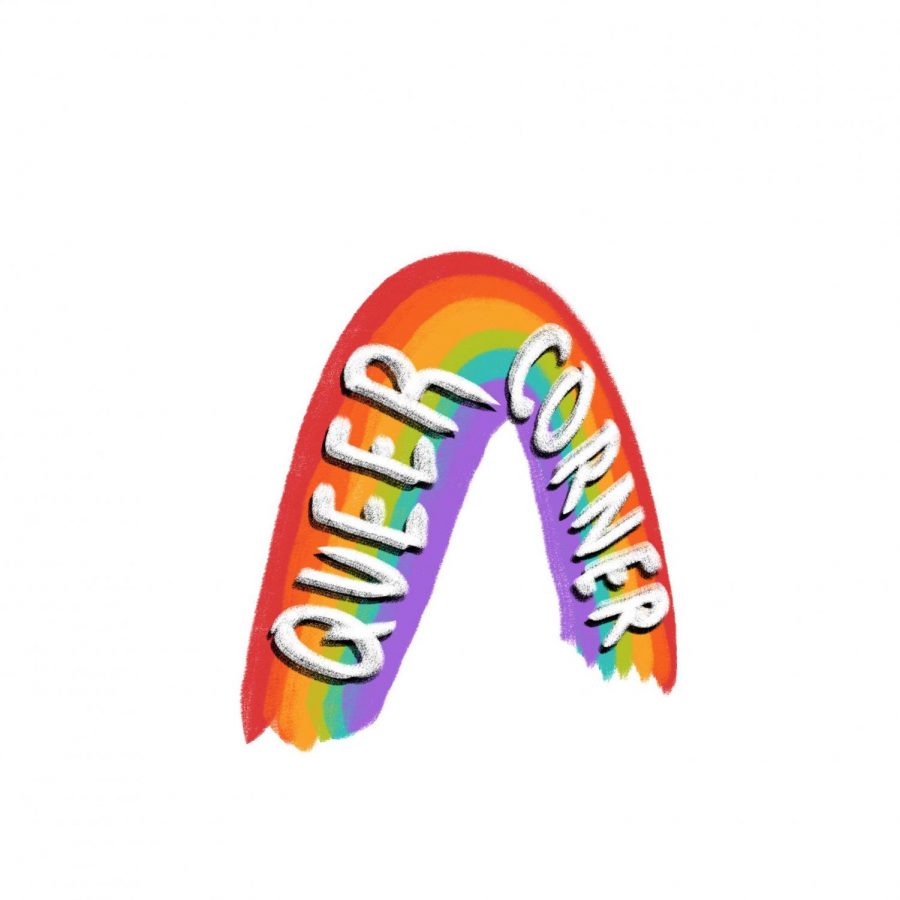The Queer Corner | History is Black and queer
The Queer Corner is a biweekly blog exploring LGBTQ+ community and culture.
February 3, 2022
I’m welcoming February with open arms. There’s a lot to like — social, political and economic turmoil notwithstanding, but I can’t really blame that on February. It’s a month of love, groundhogs and, most importantly, Black history.
Of course, it’s always a good time to learn about Black history — after all, Black history is American history — but with last year’s media frenzy over critical race theory and this week’s renewed uproar over censorship, it seemed like a perfect time to take a look back through history at some of the Black and queer individuals who impacted our world in a big way.
Let’s start with the renaissance. You know, the one that happened a hundred years ago in Harlem. The Harlem Renaissance was a political and artistic revolution that shaped culture as we know it. Through art, poetry and prose, people like Langston Hughes and Richard Bruce Nugent brought Black culture to the forefront of American writing. Though Hughes wasn’t definitively out as gay, Nugent, his contemporary and colleguage, was not only openly gay, but also wrote honest depictions of queer 1920s Harlem, such as in his short story “Smoke, Lilies and Jade.”
On the music scene, blues singers such as Ma Rainey and Gladys Bentley introduced Black womanhood in an entirely new light. Rainey, often called the “Mother of the Blues,” infused her music with her experience as a Black bisexual woman in the 1920s. Blues performances like Bentley’s defied gender and sexual norms in her personal life and on stage. While the Harlem Renaissance was hardly the beginning of Black history in America, its moment of creative liberation sent shockwaves through American culture — ones we still feel today.
Life took a turn after the ‘20s. Between a pandemic, a depression and a world war, things were not looking good. But alongside all of the social and political strife present in the 1950s, some, like James Baldwin, found a foothold as writers and activists. Baldwin, who identified openly as homosexual, provided invaluable cultural critiques on the intersections of race, gender and sexuality.
Baldwin’s close friend Lorraine Hansberry also ventured into intersectionality, before scholar Kimberlé Crenshaw popularized the term in 1991. Hansberry’s pivotal play “A Raisin in the Sun,” which first premiered on Broadway in 1959, secured her spot as an influential playwright. But her work as a feminist, queer and anti-colonial activist made her positively unforgettable.
The Civil Rights movement of the 1960s and the Second-Wave Feminist movement of the 1970s ushered in a new dawn of social change, a change that spread from the bus boycotts in Alabama to the humanities departments of liberal arts universities. In this new social climate, Audre Lorde made a name for herself as a prolific Black feminist writer, poet and activist. Her identities as a Black woman, a lesbian, a mother and a cancer survivor informed her work, which continue to be taught as core components of gender, sexuality and women’s studies.
But activism wasn’t just in the arts and academia. People made powerful change anywhere they could. In the streets, activists like Marsha P. Johnson championed movements for liberation, beginning with her notable involvement in 1969’s Stonewall Riots. We talk about Stonewall a lot in queer spaces and for good reason. The riots — which prompted the first Pride parade in 1970 — changed the course of LGBTQ+ activism, all thanks to the work of Johnson and others like her.
Now, at this point you’re probably thinking — where does Madonna fit into all of this? That’s actually a fantastic question. The answer, of course, lies in her hit single, “Vogue,” which, admittedly, has a fairly complicated and messy history. Black and queer culture boomed in the drag ballrooms of New York City, a space hit hard by the AIDS crisis of the 1980s. Amidst the tragedy, the Black queer community continued to find joy in expression. Dancers such as Willi Ninja, who choreographed and performed in Madonna’s “Vogue” music video, broke gender and sexual norms through artistry.
And making history isn’t only a thing of the past. Just this year, Michaela Jaé Rodriguez became the first transgender actress to recieve a Golden Globe for her starring role in the FX series, “Pose.” In her role as the fictional Blanca Evangelista, she tells the story of an HIV-positive trans woman living in the 1980s and competing in New York’s drag balls. “Pose” has become a refreshing home for Black and queer representation in popular media, but the work of sustaining that representation is far from over.
We’re living in history. A history that’s full of people who look nothing like America’s well-taught founding fathers or popular media’s beloved suburban middle class. I’m glad that we have February and June to learn about Black and queer history respectively, but these histories aren’t separable from the subject we think of as American history.
And, believe me, people would love to separate them. This February, the one that I’m welcoming with open arms, I’m thinking about history. Not as neat and organized, but as messy, intersectional, and most often, difficult. That’s the kind of history we fight to make, and that’s the kind of history we should keep fighting to know.
Rachel writes about queer culture, the queer community and navigating life beyond the binary. Talk to them at [email protected].








